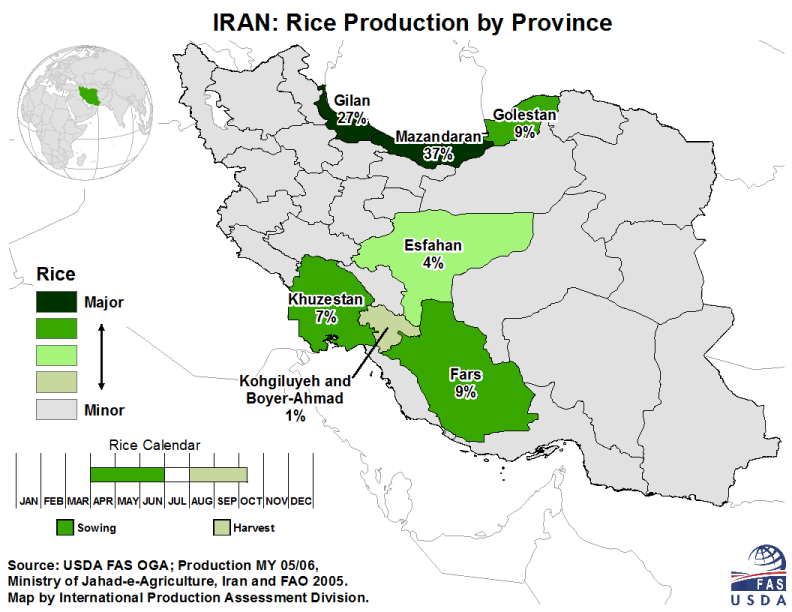Imports of rice will be banned in Iran from August 22 based on a seasonal plan in support of domestic production.
Importers have time to go through the clearance procedures of their rice consignments until August 22, IRNA quoted Mehrdad Jamal Oranqi, the deputy head of Iran Customs Administration as saying.
Every year and during the rice harvest season, the government bans rice imports in support of local farmers and domestic production. The ban usually lasts until November.
Iranians annually consume 3.2 million tons of rice. Domestic production amounts to around 2.2 million tons every year, but last year the figure increased due to favorable weather and high precipitation levels.
The difference between domestic production and local need is imported from the UAE, India, Pakistan, Thailand, Turkey and Iraq.
The data released by Iran Customs Administration shows that so far a total of 819,000 tons of rice have been imported since the beginning of the current Iranian year on March 20.
A total of 2.9 million tons of rice were produced in the country during the last Iranian year (March 2019-20), registering close to a 45% increase compared with the previous year, according to the director general of the Agriculture Ministry’s Grains and Essential Goods Bureau.
“This increase in rice output is because of favorable weather and heavy precipitations during February and March of 2019, due to which land under rice cultivation increased by 38% to reach 834,000 hectares,” Faranak Aziz Karimi said.

The map shows rice production in Iran's provinces based on 2005 data.
The northern Gilan and Mazandaram provinces together account for 71% of Iran’s rice production, according to figures released in a recent report published by the Statistical Center of Iran.
As per a recent decision made by the Market Regulation Headquarters on June 4, customs duties on rice imports have decreased from 25% to 10%, Fars News Agency reported.
Since March 20, the government has discontinued the allocation of foreign currency at the subsidized rate of 42,000 rials per dollar for rice imports; it has instead called on importers to meet their forex requirements from the export earnings of non-oil products (petrochemicals, steel and minerals) traded through the so-called secondary FX market that has exchange rates much closer to the free market rates.
The decline in rice import duty aims to prevent a surge in prices.